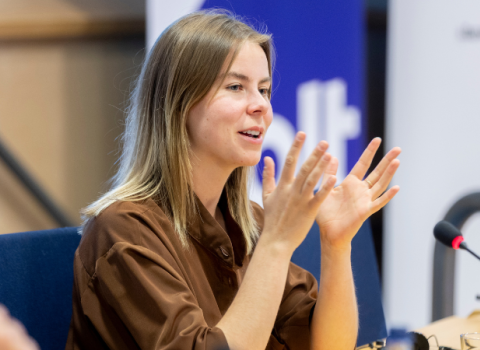Molecular Solar Ltd. a spinout company from the University of Warwick , announced today a new plan to raise a further £5 million in investment to create its own bespoke technology facility to help bring its technology to the market place. The plan builds on the company’s recent success in gaining venture capital, and in joining a £2.1 million research programme.
The company has developed a range of new technologies that places them in a unique position to exploit organic solar cells for a range of novel energy saving applications.
Molecular Solar Ltd researcher Professor Tim Jones from the University of Warwick said: “We are working with solar cells made from organic semiconductor materials which offer the prospect of very low cost manufacture of lightweight, flexible cells. They are made from sustainable materials and can be deployed as flexible sheets that could be used for a variety of applications including: a solar powered mobile phone charger that rolls up into a shape as small as the size of a pen, micro-lights that can be added to clothing, and a detachable sun-shade for automobile windscreens that powers a small integral fan to circulate air and cool the interior of the car when parked in direct sunlight.”
Molecular Solar Ltd is participating in a recently announced £2.1M project being funded by the Technology Strategy Board (TSB), the Engineering and Physical Sciences Research Council (EPSRC) and the other participating companies (Kurt Lesker, Asylum Research and New World Solar) to develop prototype third generation organic solar cells.
The company also attracted significant Venture capital support following the announcement by Molecular Solar researchers that they had developed a gold plated window as the transparent electrode for organic solar cells. Contrary to what one might expect, these electrodes have the potential to be relatively cheap since the thickness of gold used is only 8 billionths of a metre. This ultra-low thickness means that even at the current high gold price the cost of the gold needed to fabricate one square metre of this electrode is only around £4.50.
Dr. Mark Payton, Managing Director of Mercia Fund Management which led the company’s latest investment round alongside management and private investors, said: “Our model is to back world-leading academic excellence associated with scalable, disruptive technology – Molecular Solar excels on all fronts and we see this new venture as the potential leader in the development of third generation organic solar technology making this form of energy provision open to a much broader market place.”




 A unique international forum for public research organisations and companies to connect their external engagement with strategic interests around their R&D system.
A unique international forum for public research organisations and companies to connect their external engagement with strategic interests around their R&D system.